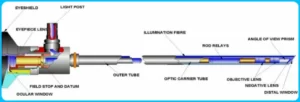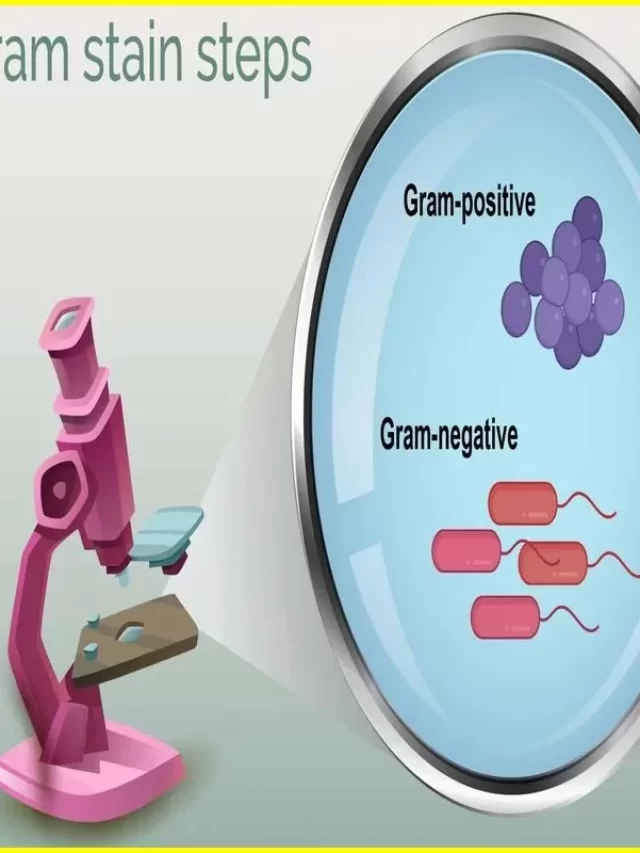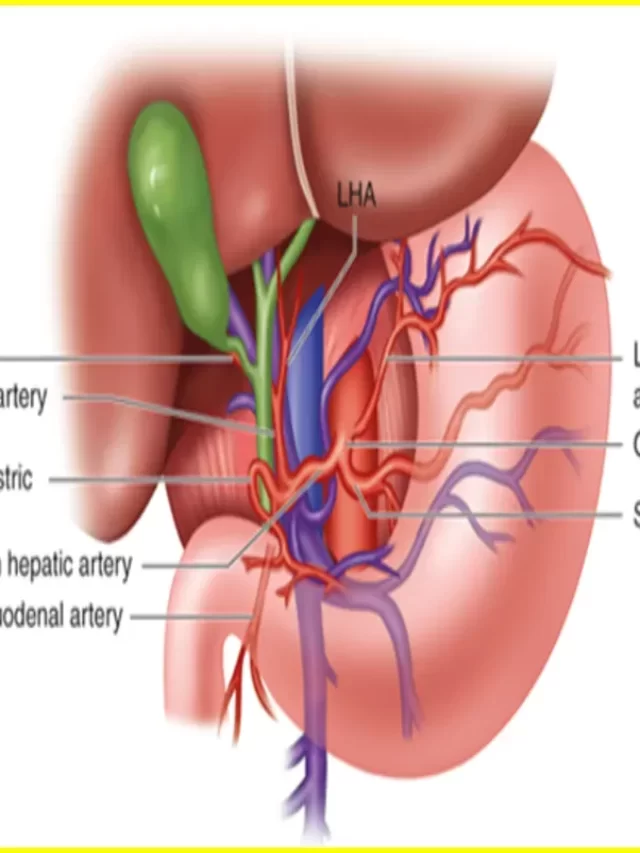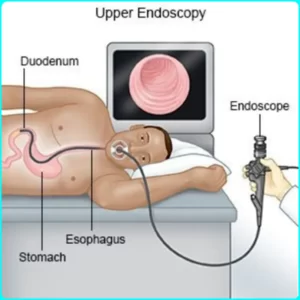What is an endoscopy ?
An endoscope can be described as a long, thin flexible tube with light that can be carefully bent at any angle, with a camera at one end. The endoscope has become the most important tool in medicine serving to see inside body cavities.
Endoscopes are usually inserted inside the body through openings such as the mouth and rectum, but they are typically inserted into the body through small incisions on the skin during keyhole surgery.
Endoscopy is the insertion of a long, flexible and thin tube directly into the body for a detailed view of an internal organ or tissue. It is used to perform other tasks, including imaging and minor surgery.
Article About:- Health & fitness
Article About:- Medical Technology
Article About:- Sports
Sometimes it can also be inserted through small incisions, for example, in the knee or abdomen. Surgery completed through a small incision and with the help of special instruments such as an endoscope is called keyhole surgery.
How does an endoscope work?
Basically a typical endoscope uses fiber optics, which allows for effective transmission of light. In this technique (fiber optics) light is transmitted through a flexible fiber (transparent) of glass known as an optical fiber.
Optical fiber travels smoothly through curved paths, and allows light to travel through, making it one of the best systems for viewing places that are usually difficult to reach. Here, total internal reflection makes it possible for light to travel along the filaments, with the light rays hitting the filament walls at an angle (with a minimum angle of 82 degrees).
Given that individual fibers are thinner than a human hair, fiber optics is considered one of the best techniques to penetrate and see different areas of the body.
There are usually two sets of fibers. These include an outer fiber that serves to supply light and an inner coherent ring that serves to transmit the image.
External fiber – This fiber consists of many fibers that are tied together in no particular order. This is the reason why the outer fiber is known as anomalous bundle. The fiber is completely surrounded by a sleeve for its protection. It is either coated with plastic or steel which protects it from water or moisture.
Inner fiber – Like the outer fiber, the inner bundle is also made up of a bundle of fibers. Unlike the outer bundle, the inner fibers are in the correct order, which is why it’s called a coherent bundle. The small lens attached to the end of this bundle allows the light to be focused effectively so that the reflected light from the object of interest can be collected and transmitted for viewing.
Endoscopes aren’t just for light inside and outside the patient’s body. It can also be used for small surgical operations and procedures. Due to the delicate nature of its use it often causes wear and tear which can be easily repaired with professional endoscope repair.
It consists of two main endoscope cables, one of which carries light into the body from a bright lamp in the operating room, illuminating the cavity where the endoscope is inserted. Light is reflected along the walls of the cable into the patient’s body cavity.
The diseased or injured part of the patient’s body is illuminated by the inner light. Light reflected from the body part travels down a separate fiber-optic cable, which is bounced off the glass walls.
Light shines in the doctor’s eyes so that he can see what is happening inside the patient’s body. Sometimes a fiber-optic cable is attached to a video camera or a CCD (which can capture images like a digital camera or feed them into a computer for various types of image enhancement.
What is endoscopy procedure
There are three main reasons for doing an endoscopy.
Investigations: If a person is experiencing vomiting, abdominal pain, breathing disorders, stomach ulcers, difficulty swallowing, or gastrointestinal bleeding, for example, an endoscope may be used to find the cause.
Confirming the diagnosis: An endoscopy performs a biopsy to confirm the diagnosis of cancer or other diseases.
Treatment:- An endoscope can directly treat the disease; For example, endoscopy is used to stain a bleeding vessel or remove a polyp.
Sometimes, an endoscopy is combined with another procedure such as an ultrasound scan. This can be used to place the ultrasound probe close to organs that may be difficult to image, such as the pancreas.
Modern endoscopes come with sensitive lights that use narrow-band imaging. This type of imaging uses specific blue and green wavelengths that allow the doctor to more easily identify pre-cancerous conditions.
An endoscopy usually takes place while the person is conscious, although occasionally the person will receive a local anesthetic (usually an anesthetic spray at the back of the throat) which often causes the patient to become unconscious.
For endoscopy procedures that involve entry through the mouth, a mouth guard protects the teeth and lips by inserting the tube.
Article About:- Health & fitness
Article About:- Medical Technology
Read More Article About:- Sports
How many types of endoscopy are there?
Arthroscopy: – Used on affected joints. The tube is then inserted through a small cut close to the joint.
Bronchoscopy:- It is used to check for infection or growth in the lungs. The endoscopic tube will be inserted through an opening such as the mouth or nose.
Colonoscopy: – Used to examine the patient’s colon or tailbone. The tube is inserted through the anal cavity.
Cystoscopy:- It is used to assess the damage done to the bladder. The scope will be inserted through the urethra.
Enteroscopy: – In this, it is used if there is a problem in the small intestine. The scope may be introduced through the mouth or anus for this.
Hysteroscopy: This is used to examine the inside of the uterus in women and the tube is inserted through the vagina.
Laparoscopy: – It is used to scan the abdominal or pelvic area of the patient. A small incision will be made close to the area and the tube is inserted.
Laryngoscopy:- It is used to inspect the larynx. The camera tube is inserted through the nose or mouth.
Mediastinoscopy: – This is the area in the middle of the lungs called the mediastinon and this type of endoscopy examines that area. A small incision is made above the breastbone for the tube.
Upper gastrointestinal endoscopy: It is used to examine the esophagus and upper intestinal tract. The scope is inserted through the mouth.
Ureteroscopy: It is used to examine the ureters in men. The tube will be inserted through the urethra.
What is the use of endoscopy?
Symptoms: There are various digestive system disorders that should be investigated. These include gastrointestinal bleeding, vomiting, difficulty swallowing and abdominal pain.
Endoscopy is also used for a ‘biopsy’ or tissue sample is collected for later examination under a microscope. It helps to confirm or cancel certain conditions, and helps to understand their extent. It is used to detect cancer, inflammation, anemia and other GI disorders.
The doctor can slide special instruments through the endoscope and treat problems in the digestive system. These may include cauterizing or burning a blood vessel to stop bleeding, widening a narrowed esophagus, cutting a polyp (tissue growth), or removing a foreign object.
Other important parts of endoscopy
Water Pipes:- The pipes carry water which is used to wash the lens thereby maintaining a clear view.
Operational channel:- This is an opening on the device which is used to carry various accessories to the distillate end for the purposes of surgery.
Control Cables :- This is used to control the direction that the distilled end will bend when going through body cavities.

Risks and side effects of endoscopy
However, endoscopy is a relatively safe procedure. However, there may be some risks involved. The risks depend on the area being investigated.
1.) Extreme sedation although sedation is not always necessary
2.) Feeling bloated for a short time after the procedure
3.) mild cramping
4.) Numbness of the throat for a few hours due to the use of local anesthetic
5.) infection of the test area that occurs when additional procedures are performed at the same time
6.) Persistent pain in the area of endoscopy
7.) Perforation or tear of the lining of the stomach or esophagus, a rare but serious complication
8.) Internal bleeding, usually minor and sometimes treatable by endoscopic cauterization
9.) Complications related to pre-existing conditions
The doctor should be informed if any of the following symptoms occur:
1.) Dark colored stools
2.) Difficulty in breathing
3.) Severe and persistent abdominal pain
4.) Chest pain
5.) Vomiting of blood

Benefits of endoscopy
Safe:- These processes have been around for almost a century, so they have been continuously refined and perfected to make them reliable for many processes. There are risks, but they are familiar and well managed.
Quick:- No extensive incision is made, there is no time to prepare the patient, give him anesthesia and carefully reach the desired location. In clinical cases endoscopy can be as short as 5 minutes or can last as long as an hour or two.
Painless:- The desired location is reached through natural openings in the body. This minimizes the area of contact for the endoscope and therefore minimizes any potential damage. Which reduces the pain.
Low Damage:- In this the desired location can be reached accurately by using good visualization techniques and thin scope. This minimizes collateral damage to the surrounding tissue.
Minimal hospitalization:- In this most endoscopy are outpatient procedures where the patient is discharged on the same day.
Quick recovery:- Specific tissues/organs are targeted, treatment is focused and quick.
Better Outcomes: There are many procedures where endoscopy gives better results than open surgery because of the precise and used equipment.
Before endoscopy
There is no preparation before an upper endoscopy, but the doctor can give you directions about what to eat or drink beforehand, and how to take common medications. You will be asked not to eat or drink for 4 to 8 hours before this procedure.
It is very important to follow this recommendation, because if you do not do so, the process has to be postponed. Being able to take regular medicines with some exceptions and changes should be discussed with the doctor in advance. For example, if taking aspirin, NSAIDs, and certain vitamins or supplements, you are asked to stop these for a week before the test.
If patients take regular anticoagulants (such as Coumadin or Plavix), they should be discussed with the physician prior to the procedure and how they should be taken.
Do not stop taking these medications before talking to a doctor, and make sure the doctor knows the medications you are taking. Medications or insulin may need to be adjusted if the patient is a diabetic, but only on the recommendation of their doctor. You will be able to take all the rest of your regular medicines with a sip of water, but again, verify this with your doctor.
One should expect to receive written instructions from the doctor performing the endoscopy at least one week before the procedure. Be sure to read all of the information and ask questions if there’s anything you’re not sure about. If you fail to follow all recommendations, your procedure may be postponed or cancelled.
When you reach
The patient will be given a specific time to arrive before this procedure. This will allow time for any preparation that needs to be done prior to the endoscopy. You will be asked to change into a hospital gown and your medical history will be reviewed.
Please be sure to bring a list of all medications and tell staff what you have taken that day. At this time, you will be explained about the procedure, including what the doctor plans to do, what the risks and benefits are, what options may exist, what the expected results are, and what steps are needed to achieve the goals of the procedure. Limits may exist. ,

During the endoscopy
Once in the procedure room, the patient will be asked to lie on their left side on the examination table. A mouth guard will then be placed in his mouth so that the endoscope does not damage the teeth.
At this point, if you are receiving sedation, the patient will begin to feel sleepy and will most likely remain asleep during the entire procedure, which usually takes about 10 to 20 minutes. Due to sedation, patients are usually unaware of what is happening and do not remember anything when they wake up.
Once the patient is unconscious, the doctor will guide a flexible gastroscope that is roughly the same thickness as a finger, through the esophagus, into the stomach, and then into the duodenum.
At the end of the tube is a light and lens that sends the images back to the TV monitor, so the doctor can visualize the tissue of the GI tract. During this time, any additional procedures will be needed, such as removing a foreign object, taking a biopsy, or dilating a narrow section of the esophagus.
These procedures are not painful. The most discomfort that one may experience during or after the procedure is usually swelling that results from air being pushed into the GI tract for better visibility or to expand areas for the tube to pass through. She goes. Once everything is done, the tube will be removed and allowed to wake up from sedation.
Recovery and discharge
After the endoscopy, the patient will be given a full awake time. Once alert enough, something light to eat and drink will be given. Still feels a little fuzzy and may have difficulty concentrating. It is only the residual effect from sedation that will wear off.
However, most doctors will require that the patient has someone with them to take them home, as the drugs that are given can reduce reflexes until they are completely cleared from the system. He is also asked not to return to work, not to use heavy machinery and not to take any major decisions for the rest of the day.
No pain should be felt after endoscopy. The worst discomfort one can feel is swelling, and a mild sore throat. If you feel anything more serious than this, it is important to inform the doctor.
Possible complications
Upper endoscopy is a relatively safe procedure so complications are uncommon. Aspiration of stomach contents into the lungs may occur, but the risk is greatly reduced by abstaining from food and drink prior to the examination, as instructed.
It is also possible to have a reaction to sedation. This is why it is important to tell the doctor if you have ever had a reaction to any medication. Occasionally, bleeding may occur from the biopsy site, but it quickly stops on its own. If the bleeding continues continuously, the doctor should be told.
Finally, while this is extremely rare, there is always the possibility that a hole could be in one of the structures being investigated. However, overall, an upper endoscopy is a very safe procedure that can be a useful tool in the diagnosis and treatment of diseases of the upper GI tract.
FAQ
How long does a endoscopy take
The duration of the endoscopy procedure can vary depending on the specific type of endoscopy performed and personal factors. In general, the endoscopy usually takes 15 minutes to an hour to complete. However, more complex procedures or those involving additional interventions may take longer.
How much does endoscopy cost
The cost of an endoscopy can vary depending on several factors, including the country or region where the procedure is performed, the specific type of endoscopy, the healthcare provider or facility, and whether additional procedures or interventions are required. Insurance coverage and individual health care plans also play a role in determining cost. Estimated cost in the usa range from around $800 to $3,000 or more.
What to eat after endoscopy
After an endoscopy, it is generally recommended to start with a light diet and gradually progress to regular foods as tolerated. Here are some suggestions for the types of foods you can eat following an endoscopy:
Clear liquids.
Soft foods.
Bland and easy-to-digest foods.
Avoid irritants.
How to prepare for endoscopy
Preparing for an endoscopy typically involves several important steps to ensure the procedure goes smoothly and safely. Here are some general guidelines that may help you prepare for an endoscopy:
Follow fasting instructions.
Medication adjustments.
Arrange transportation.
Inform your healthcare provider.
How long does an endoscopy take
The duration of an endoscopy procedure can vary depending on the type of endoscopy being performed and individual factors. In general, an endoscopy typically takes between 15 minutes to an hour to complete.








